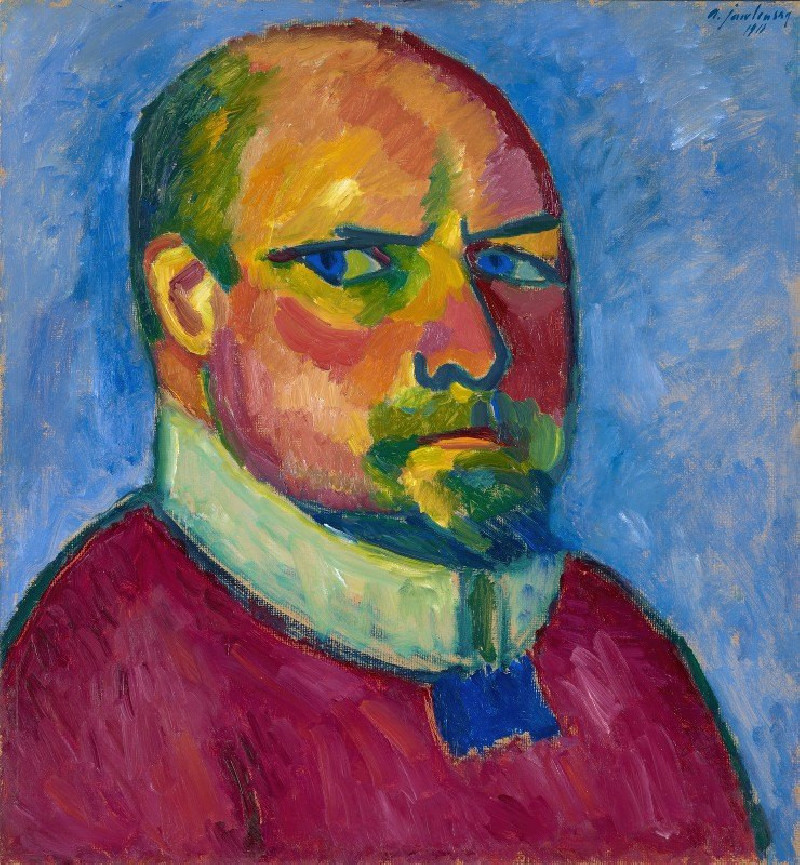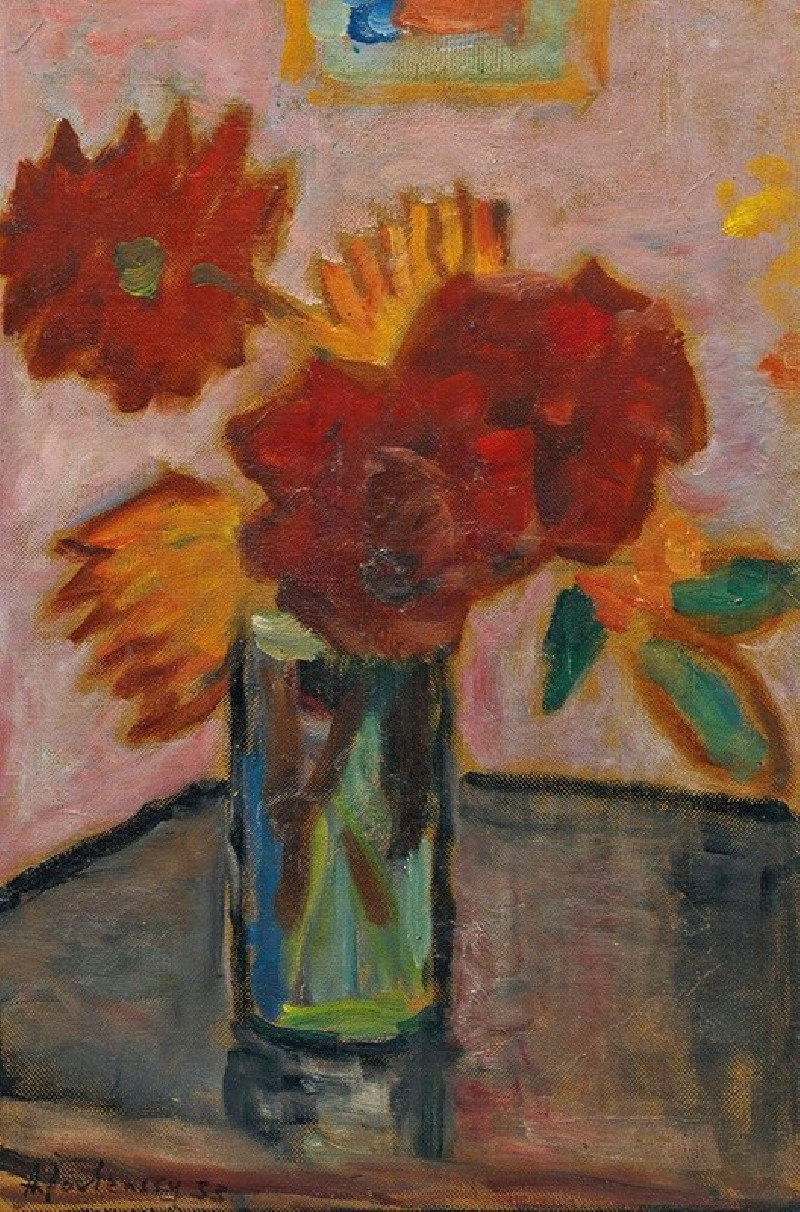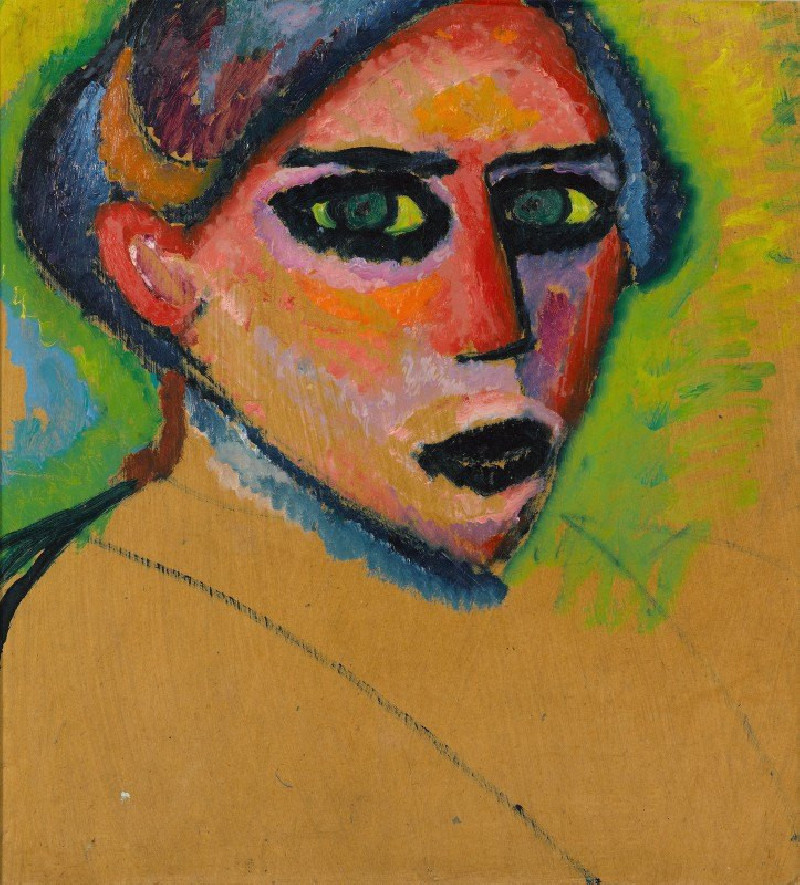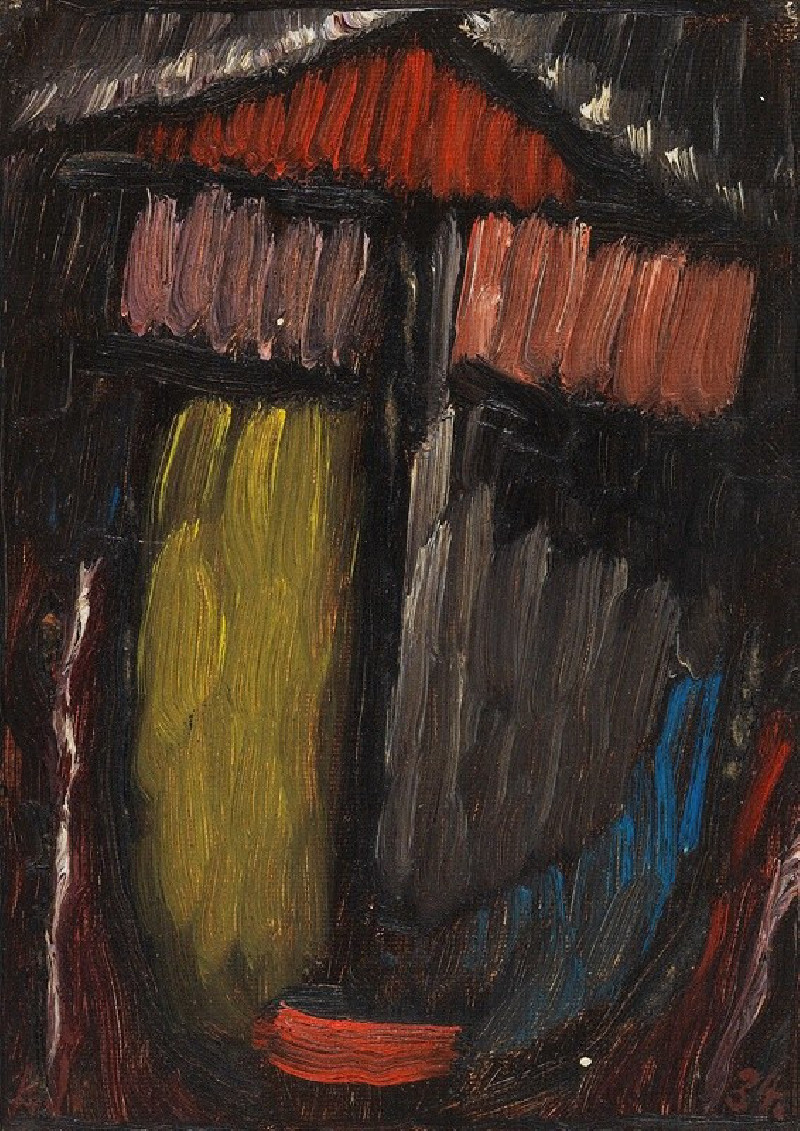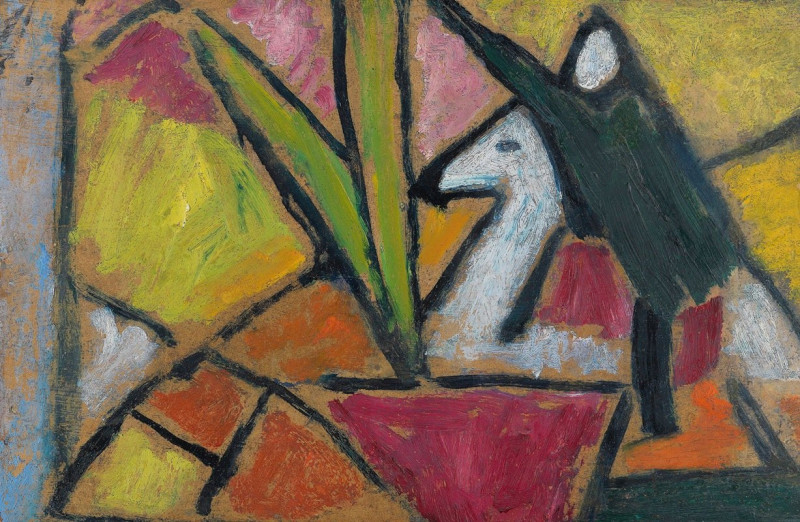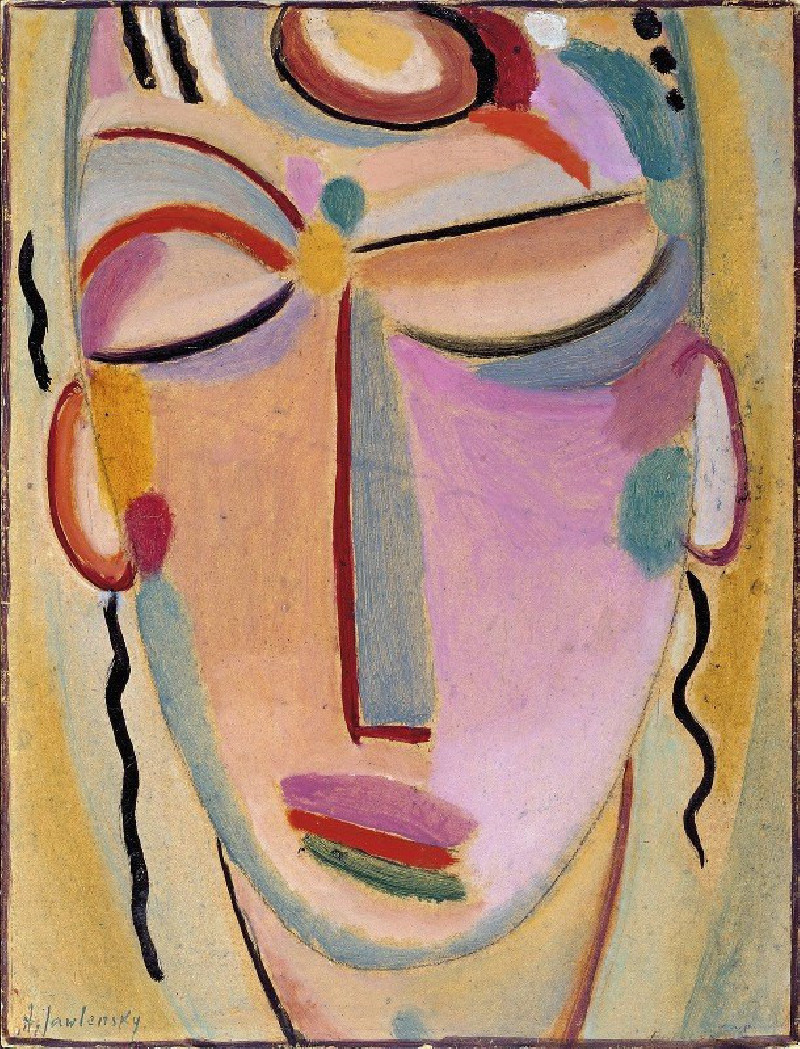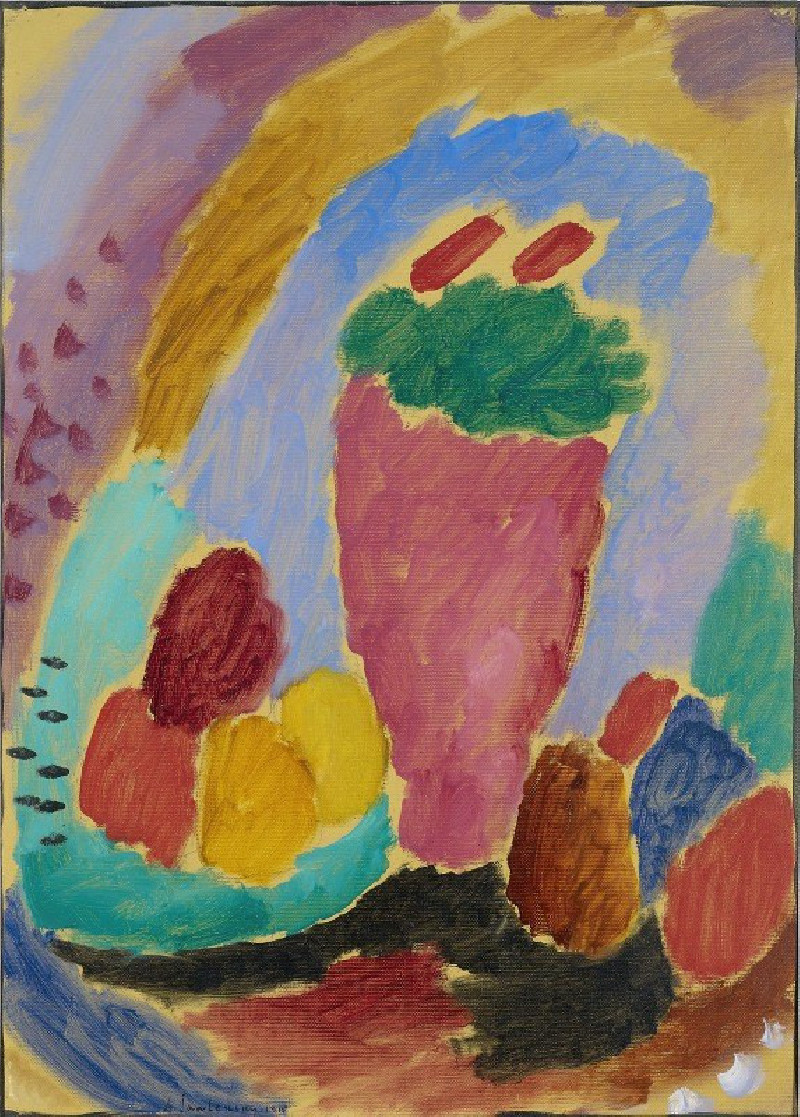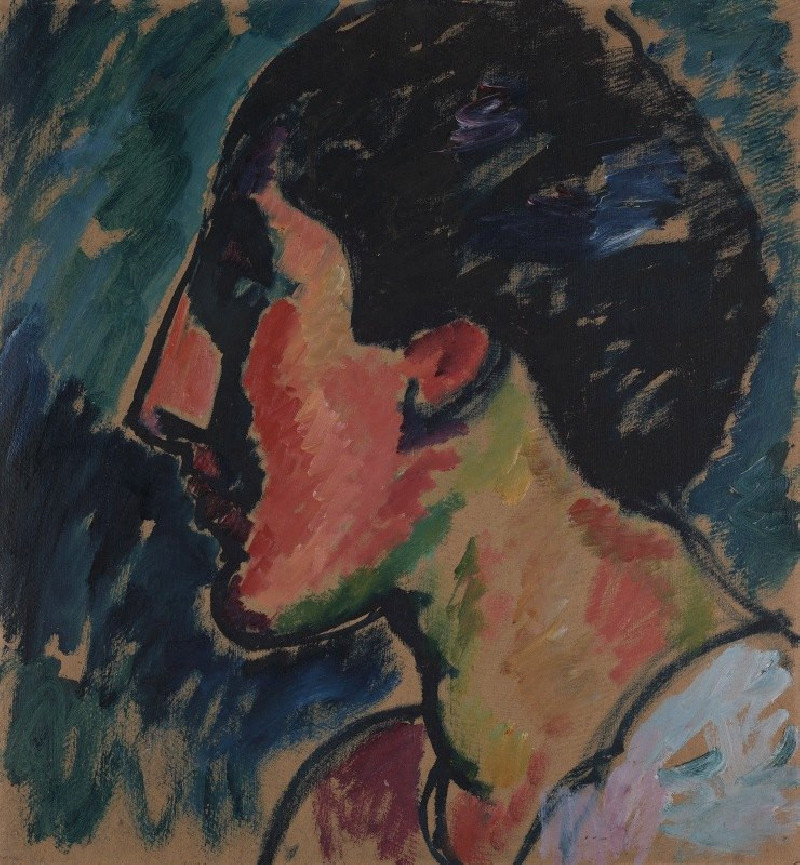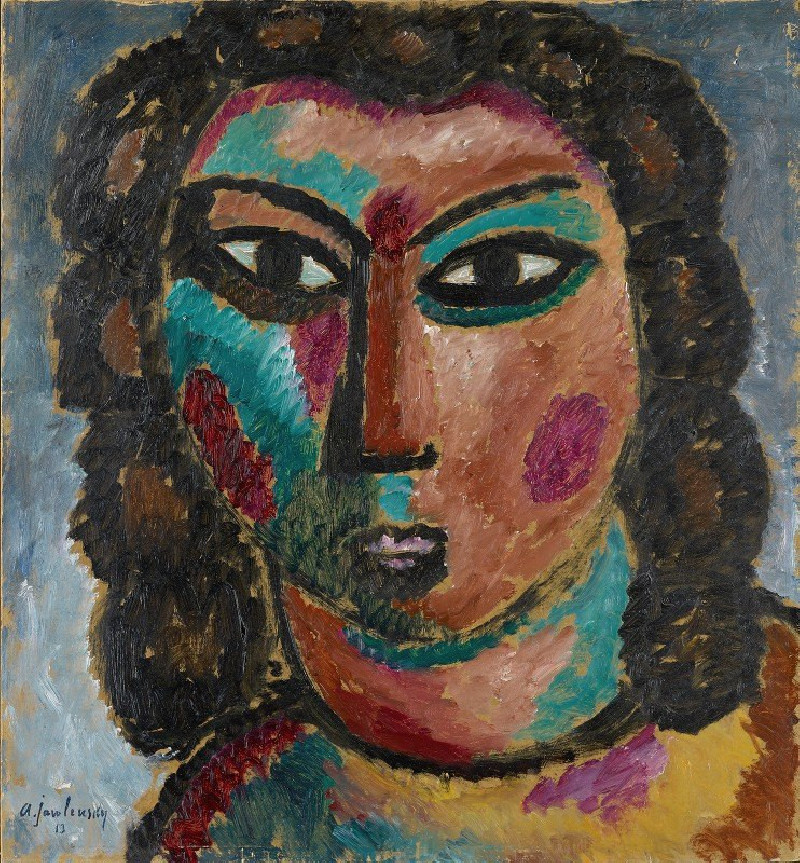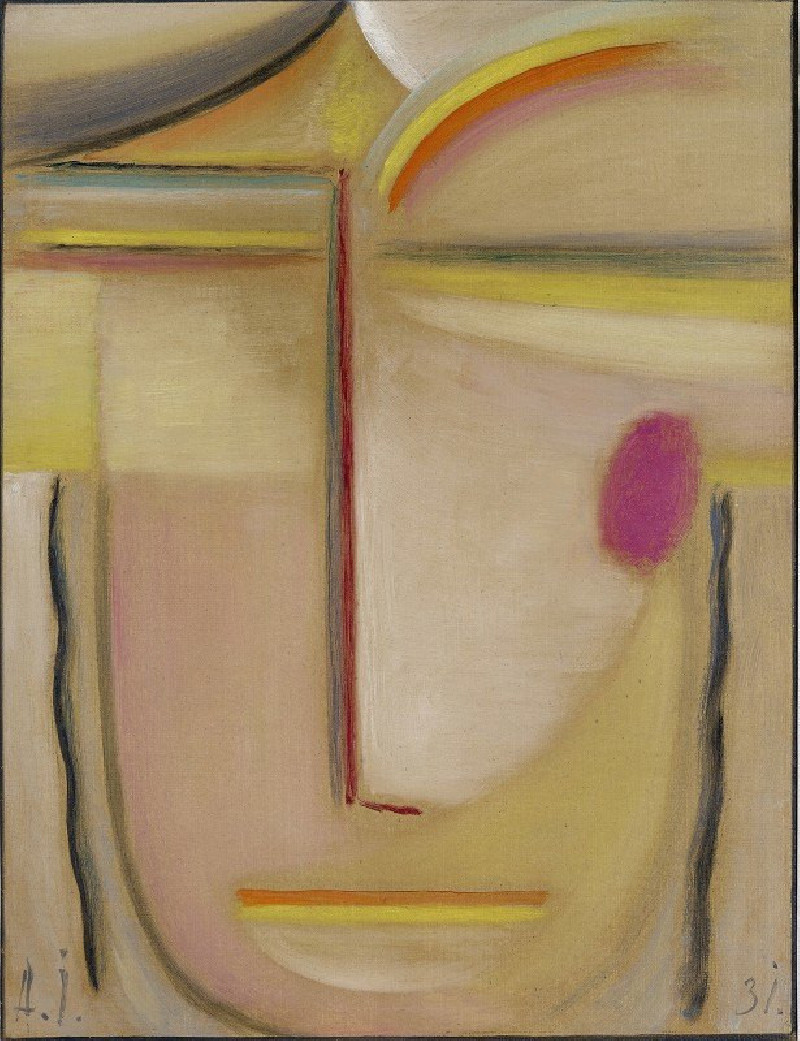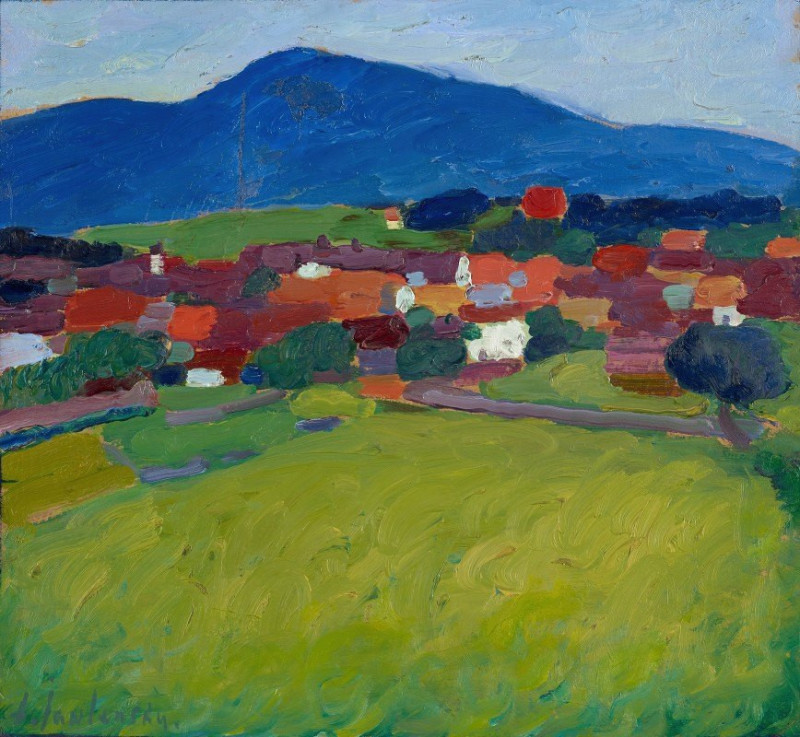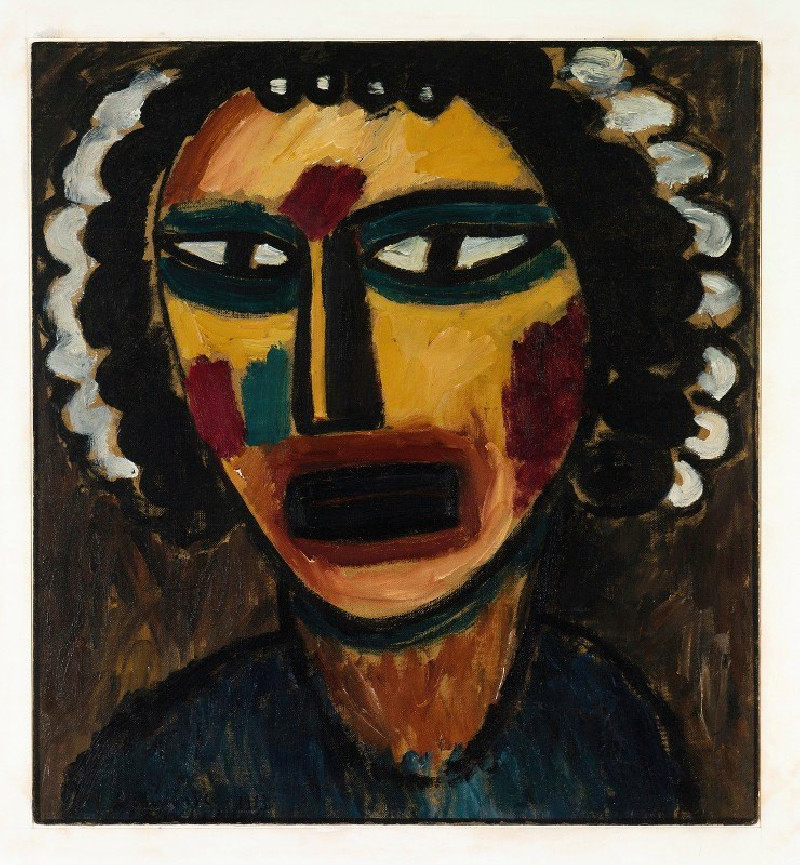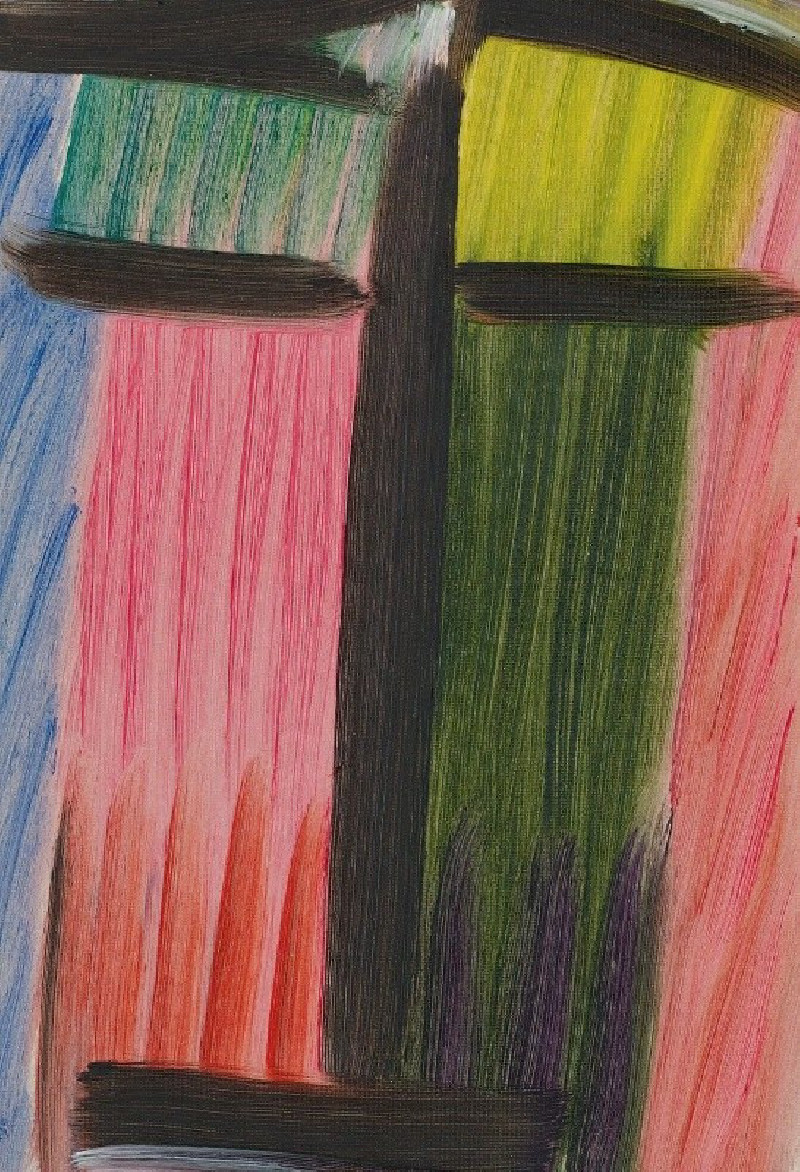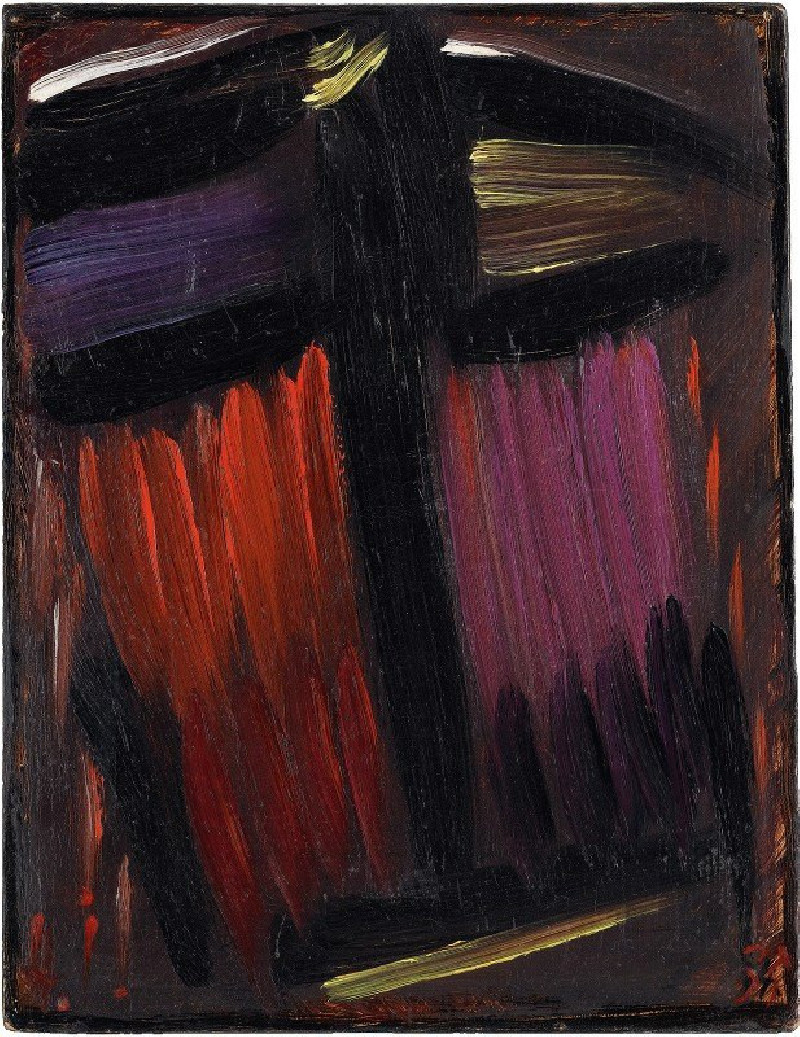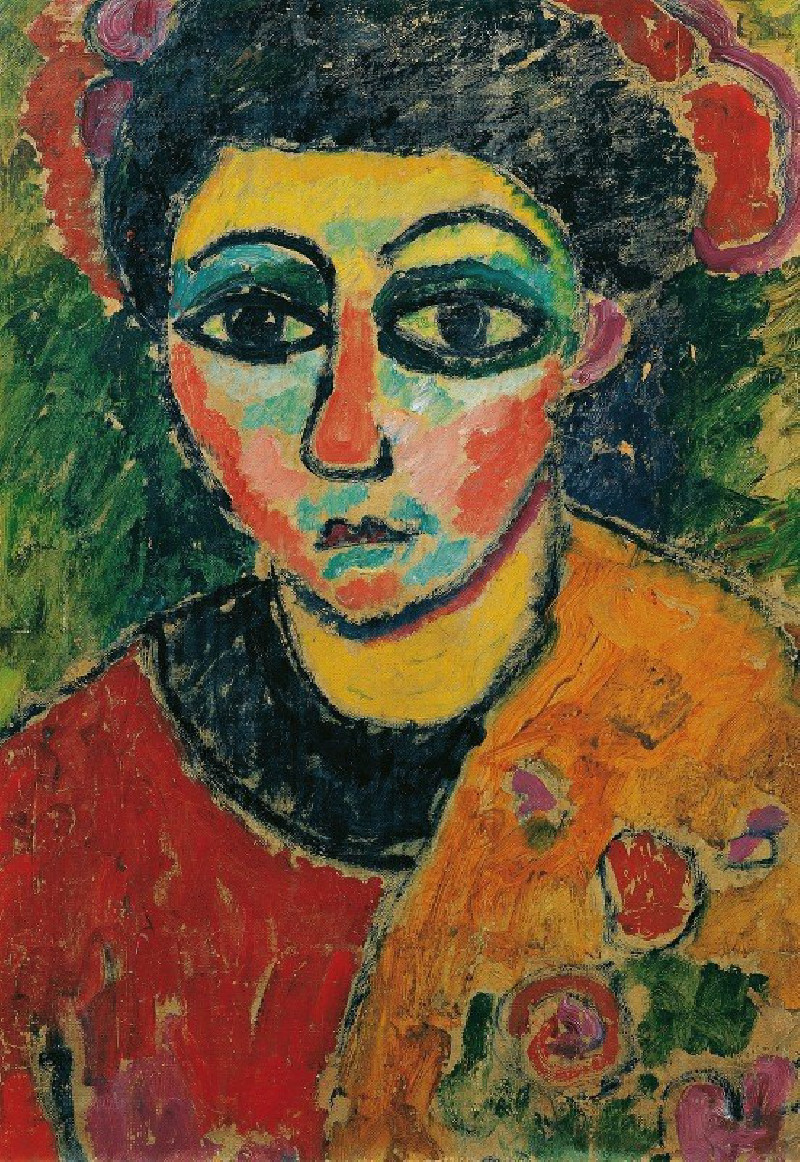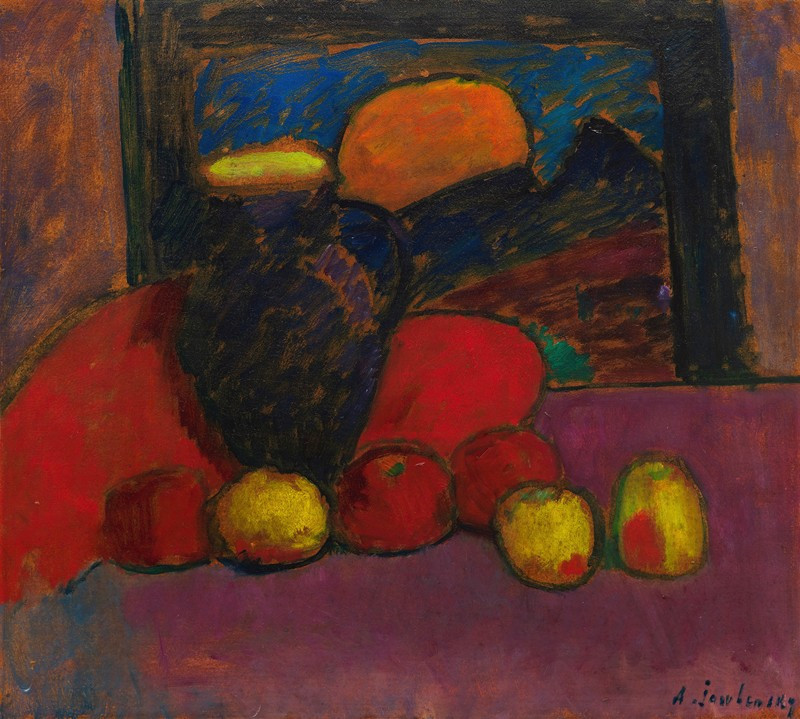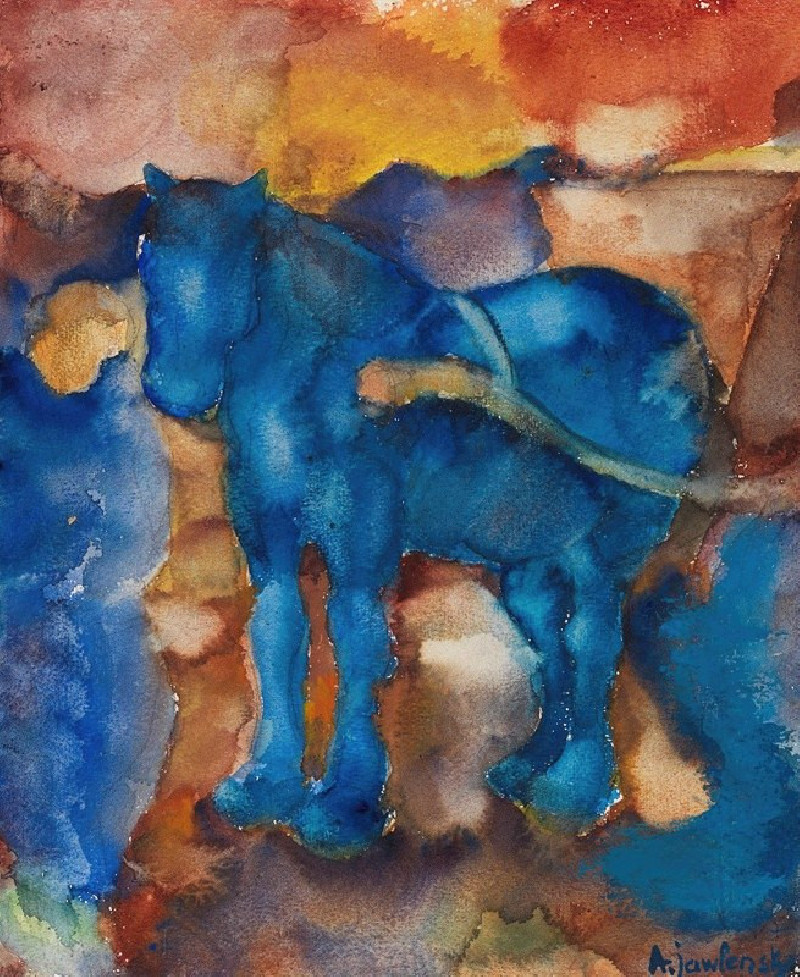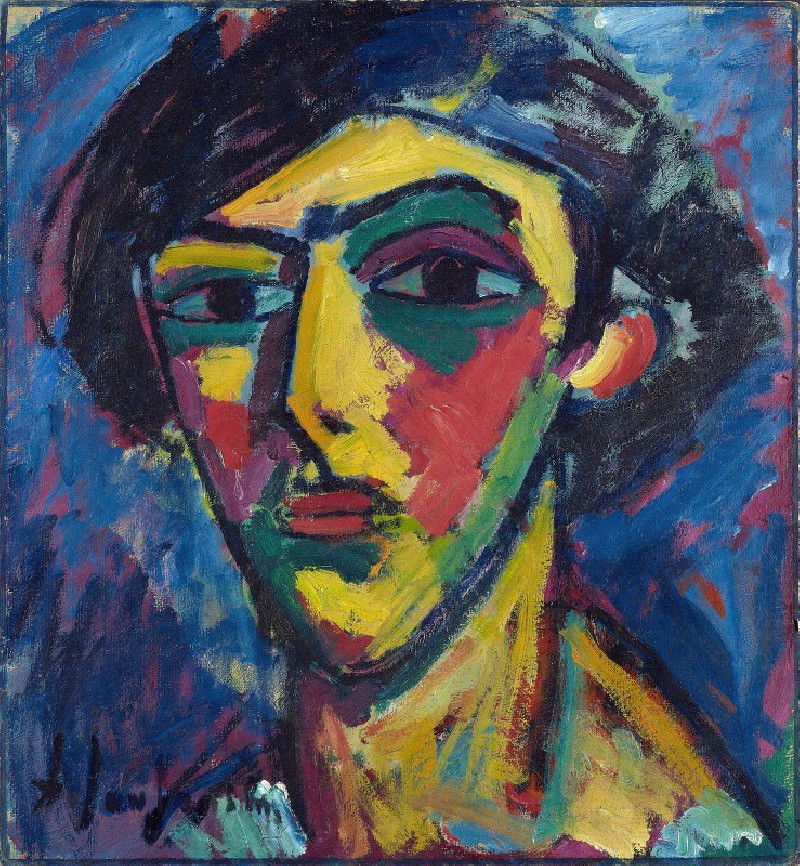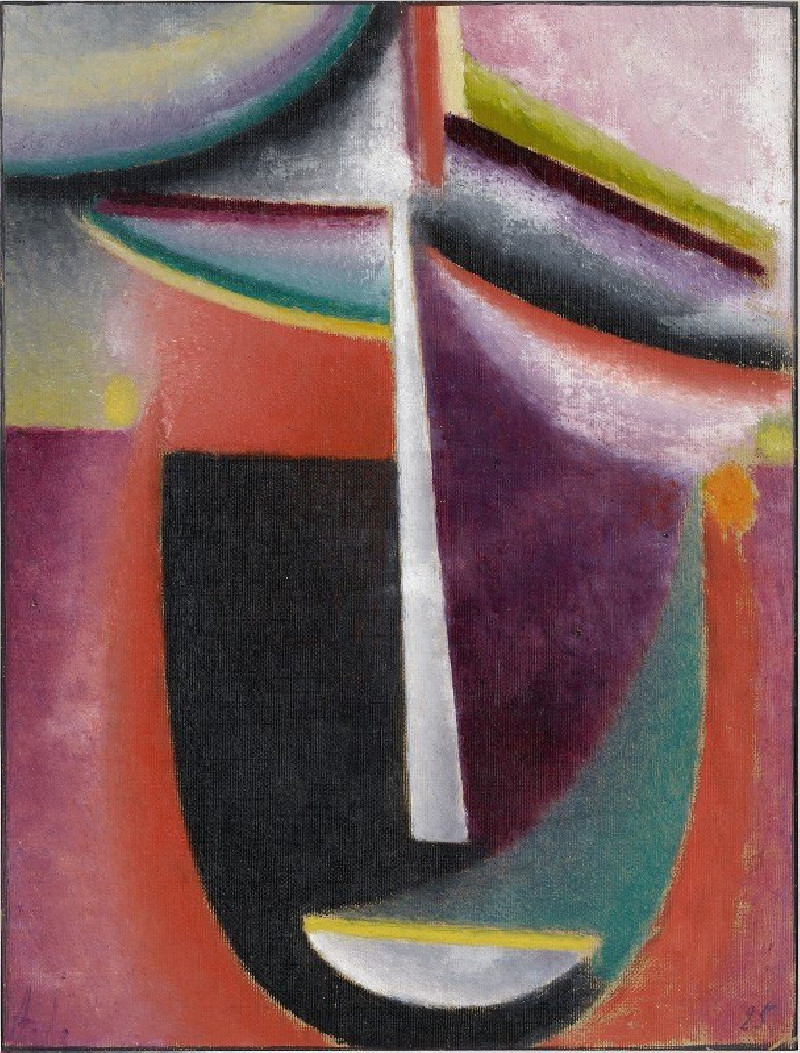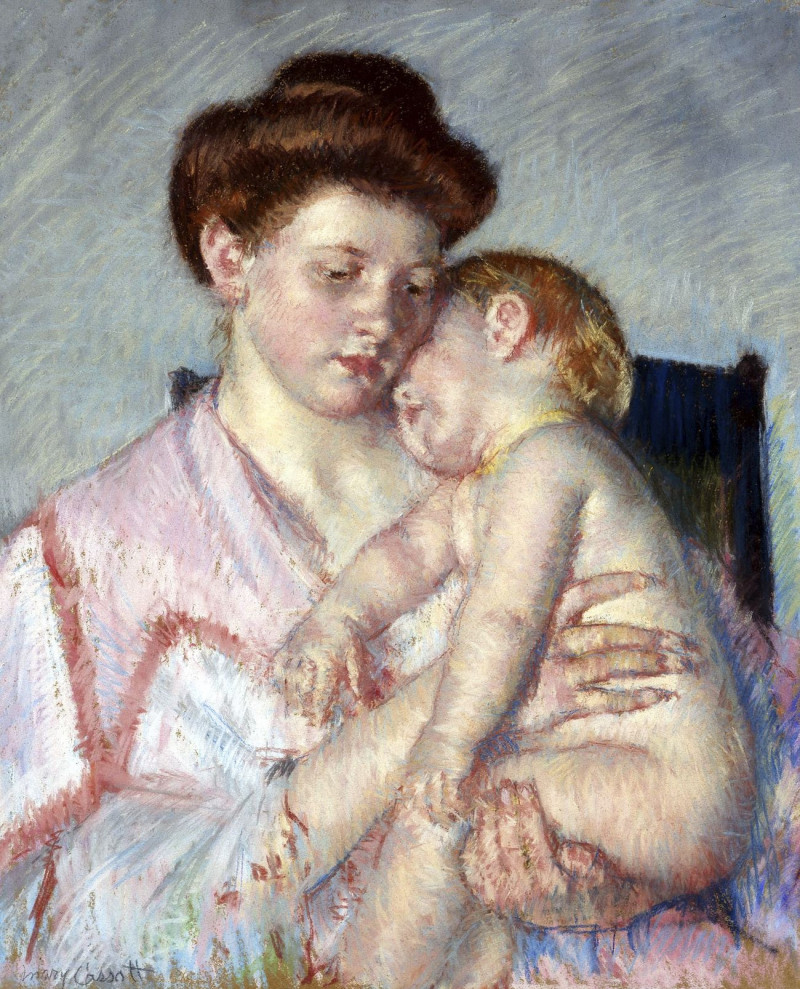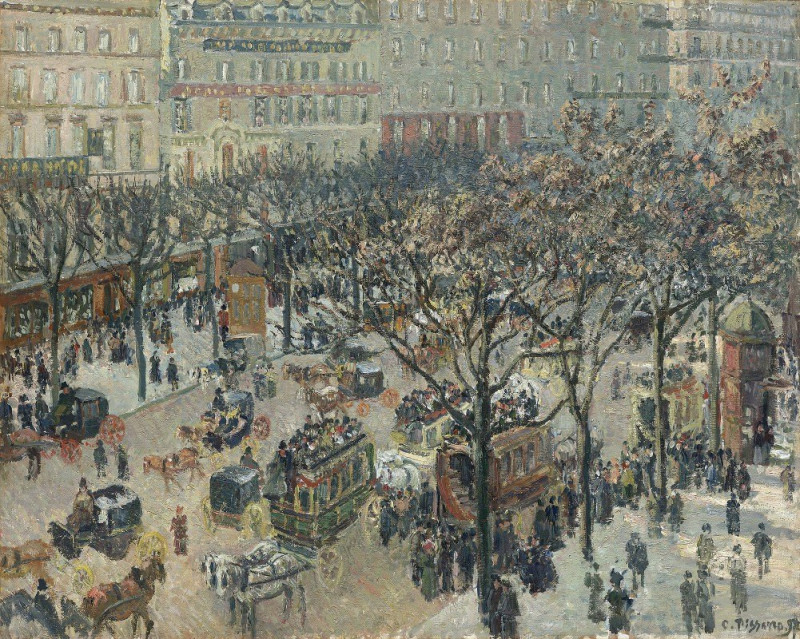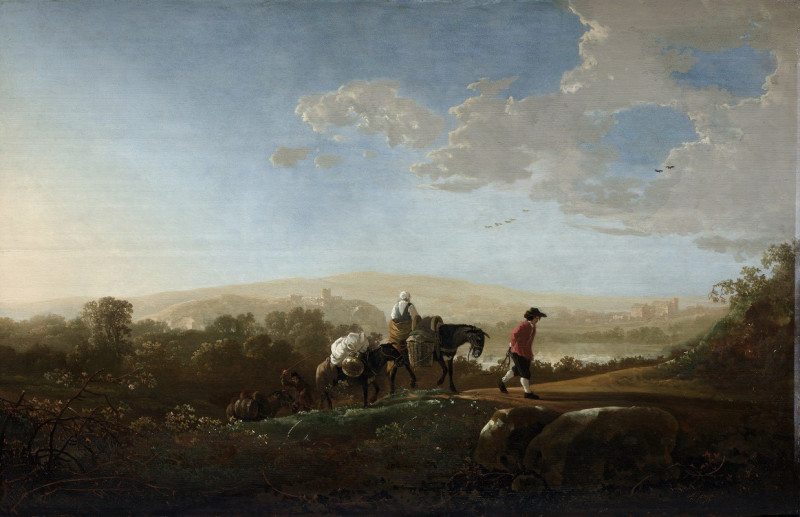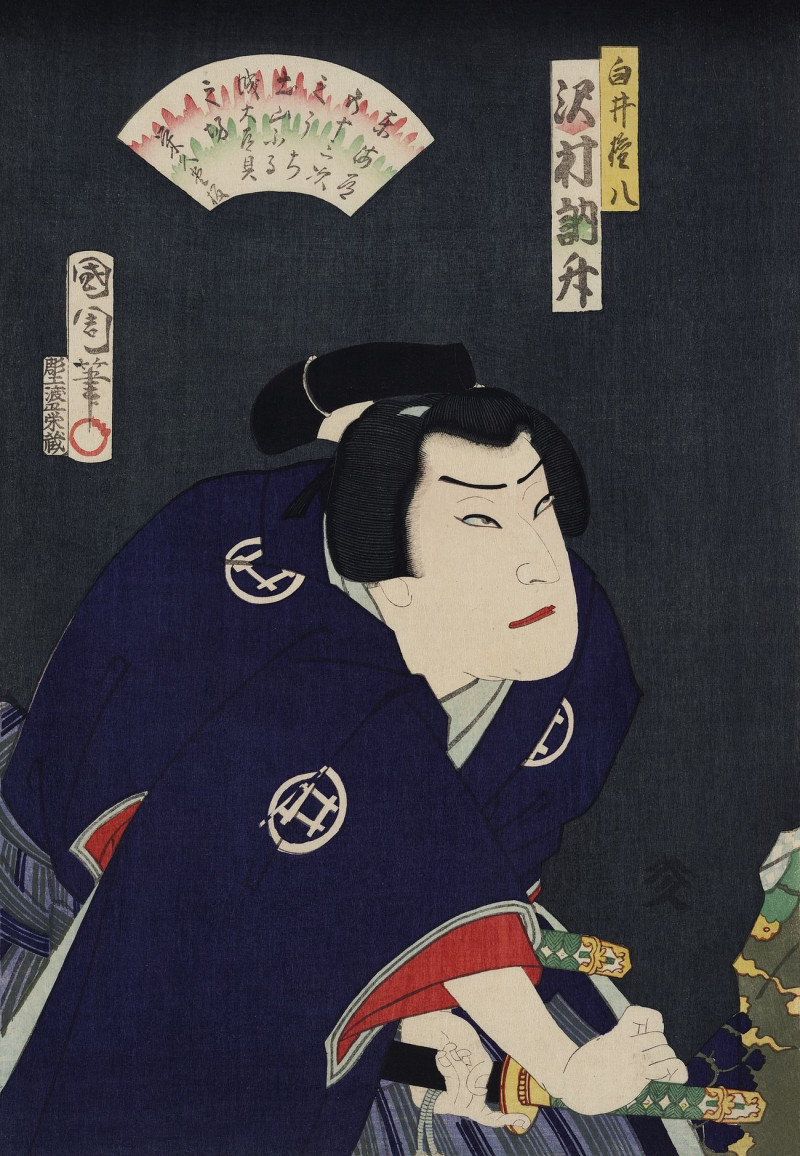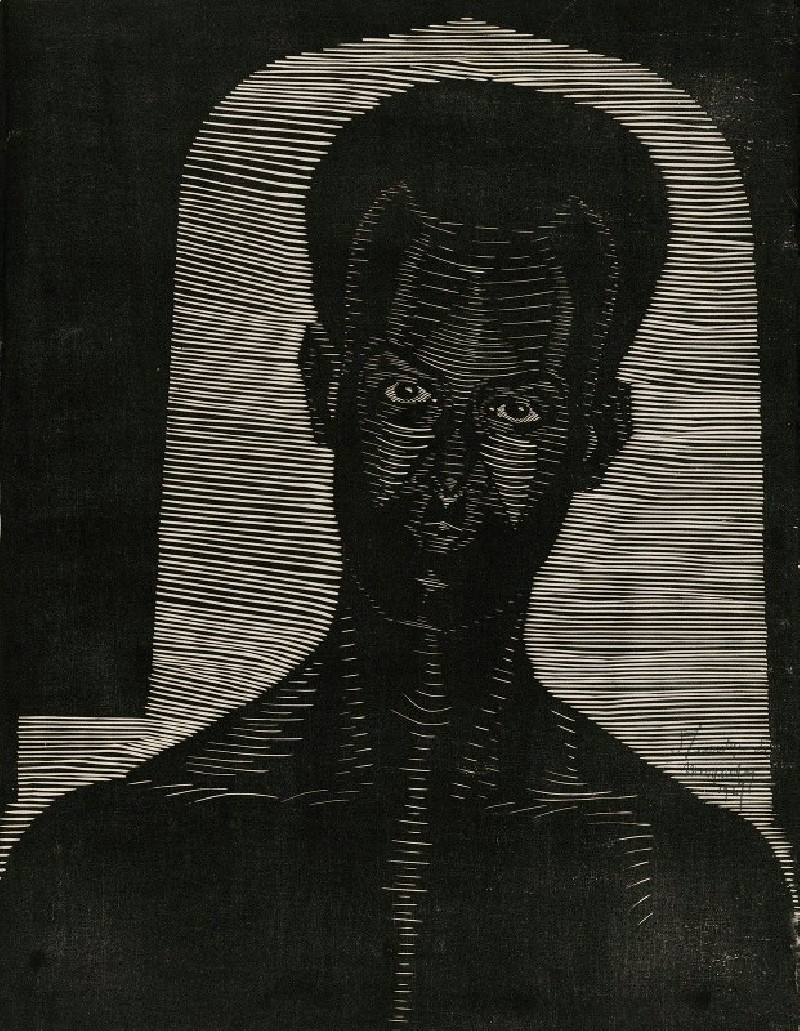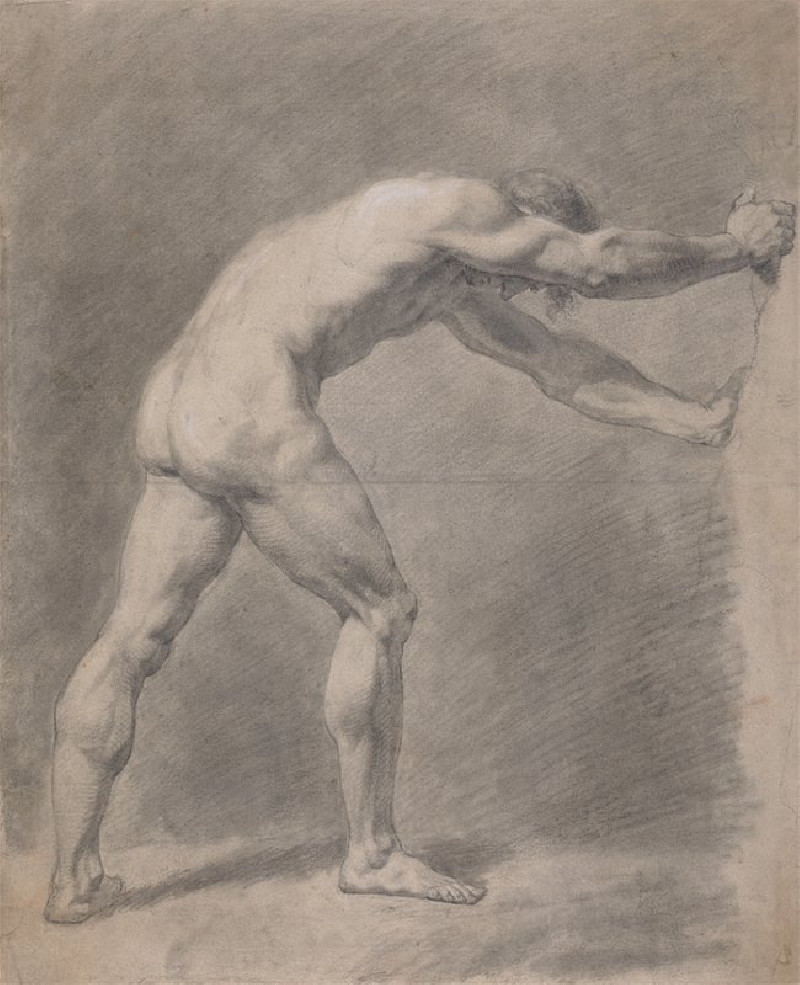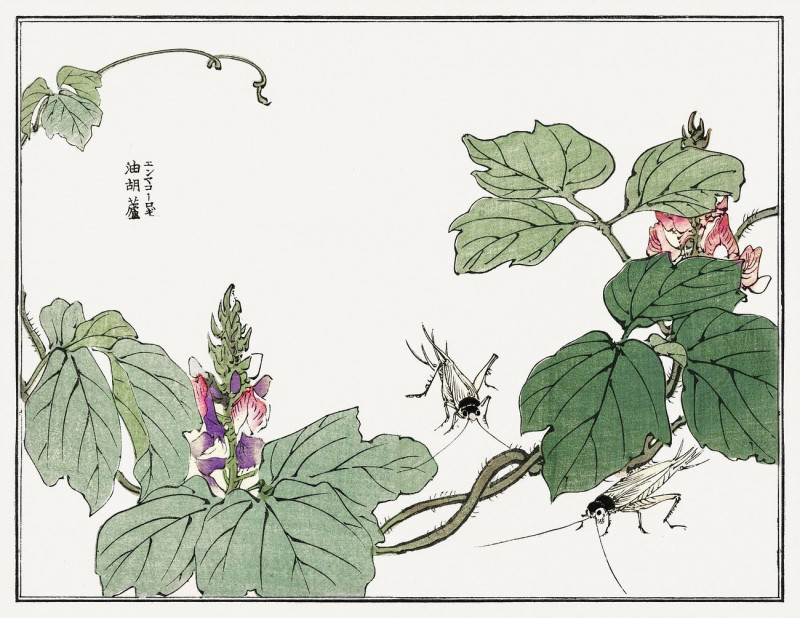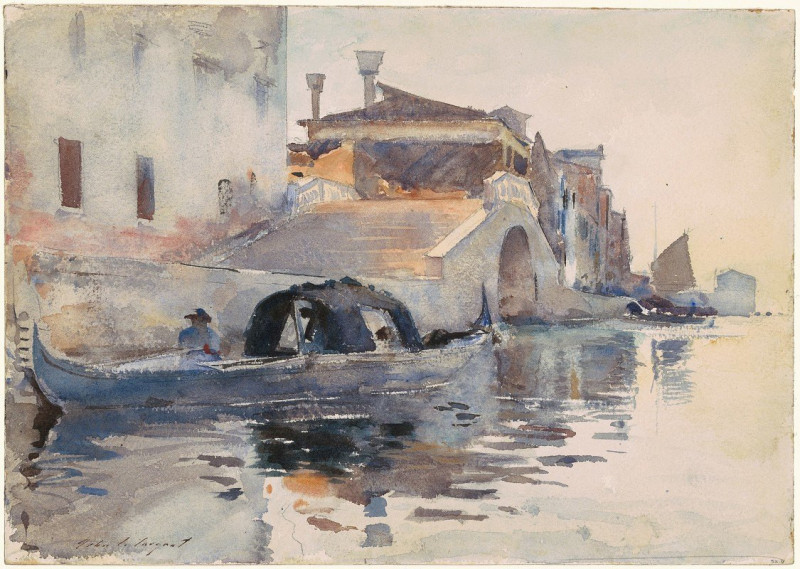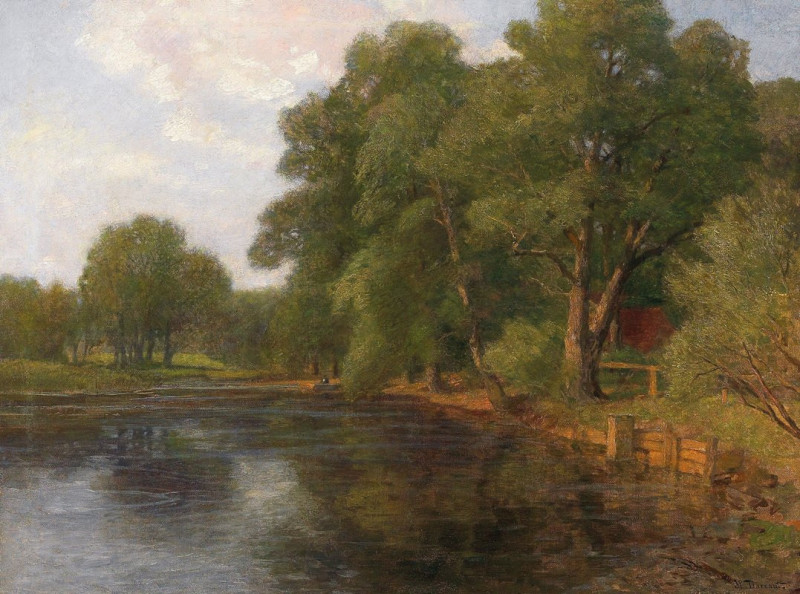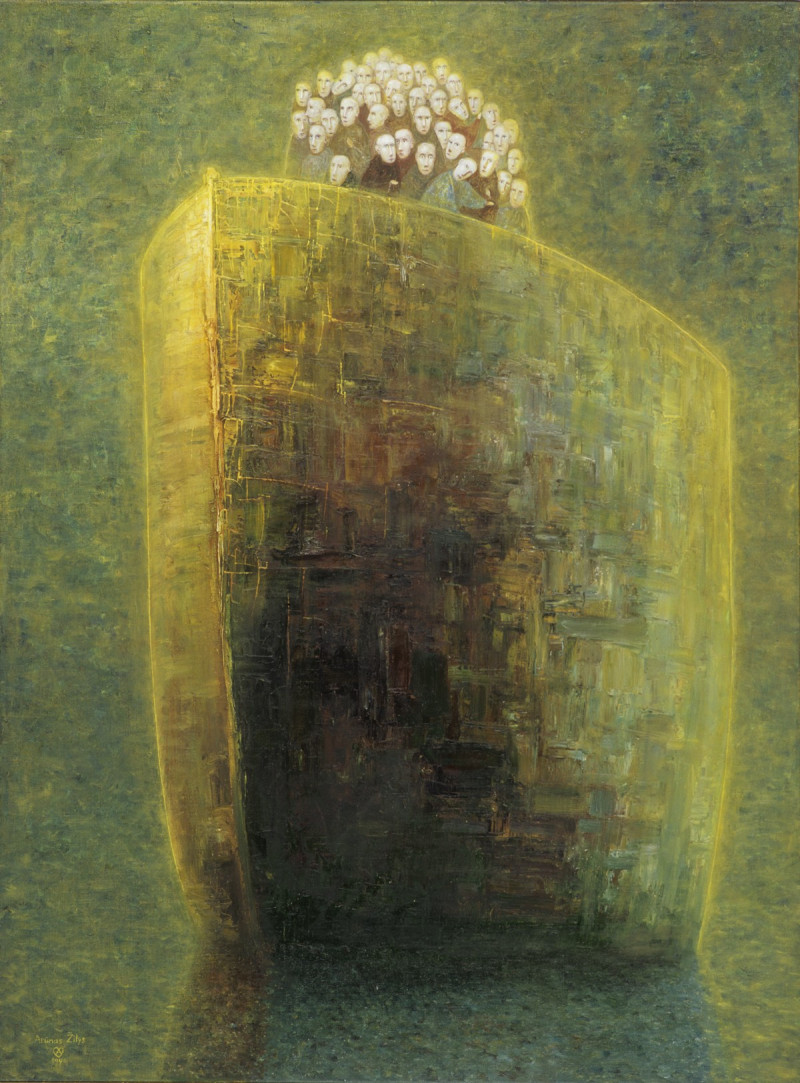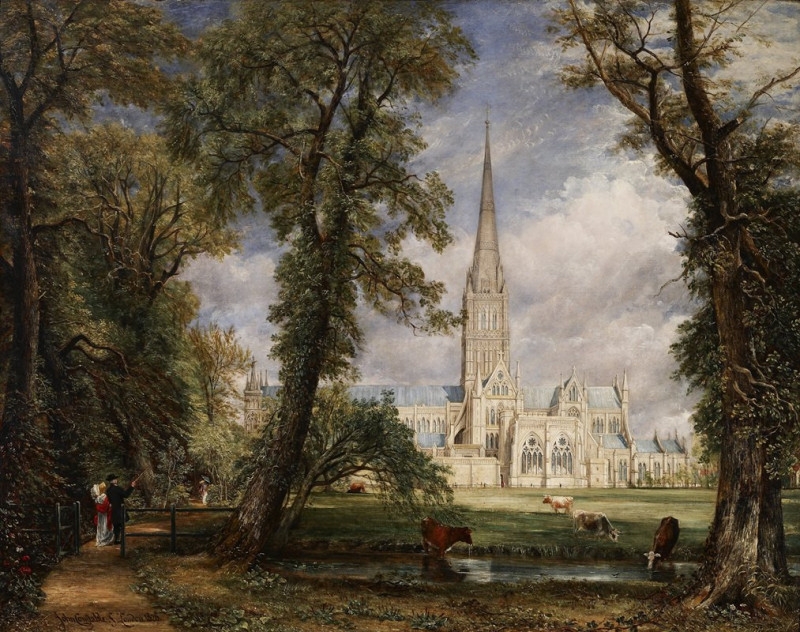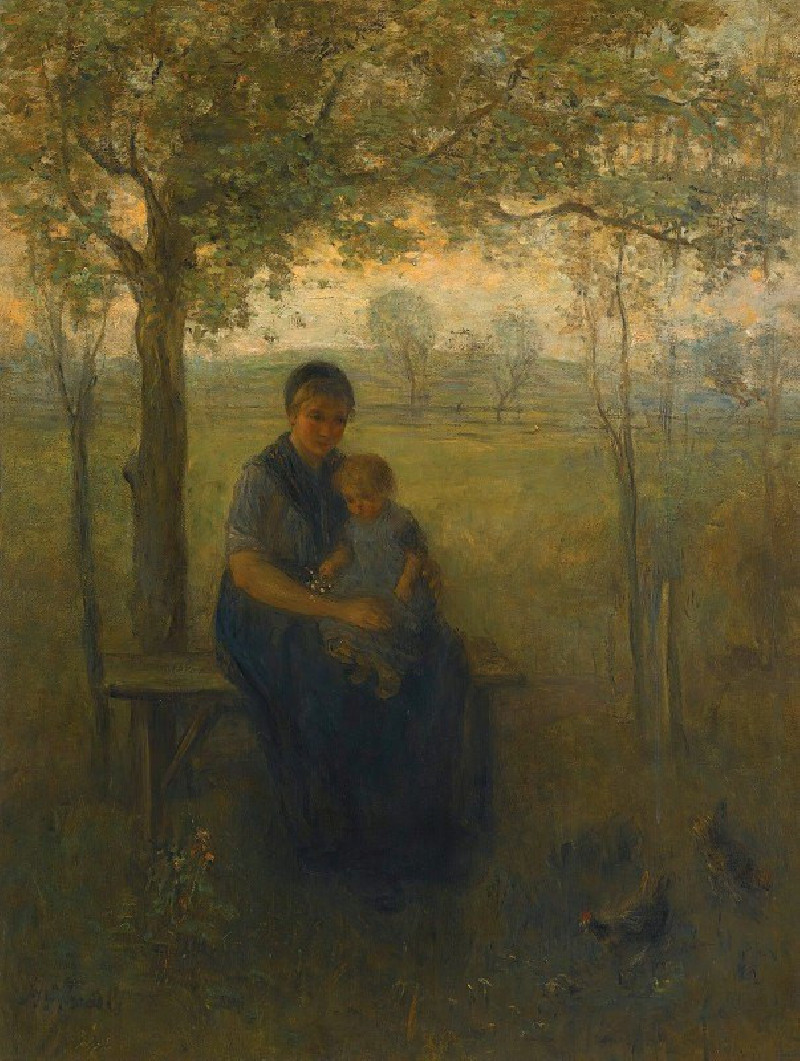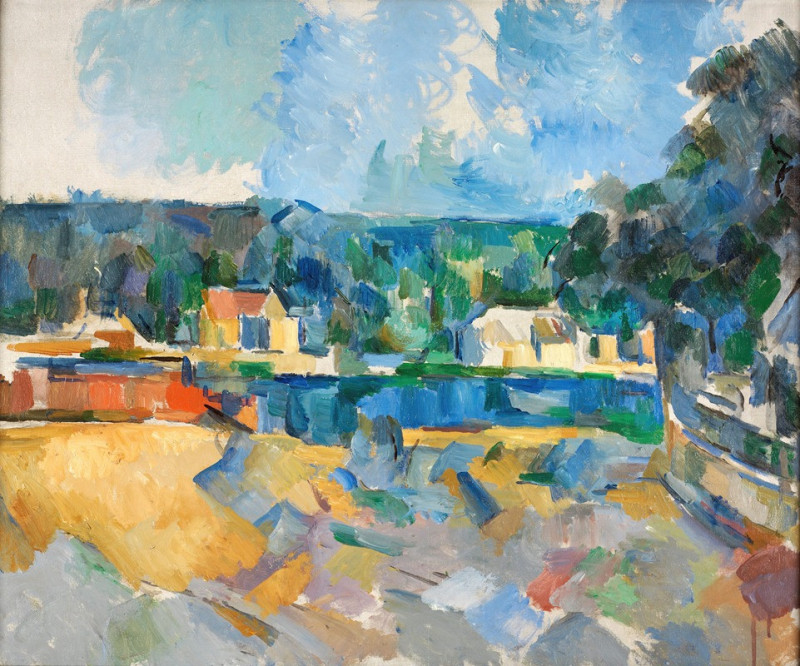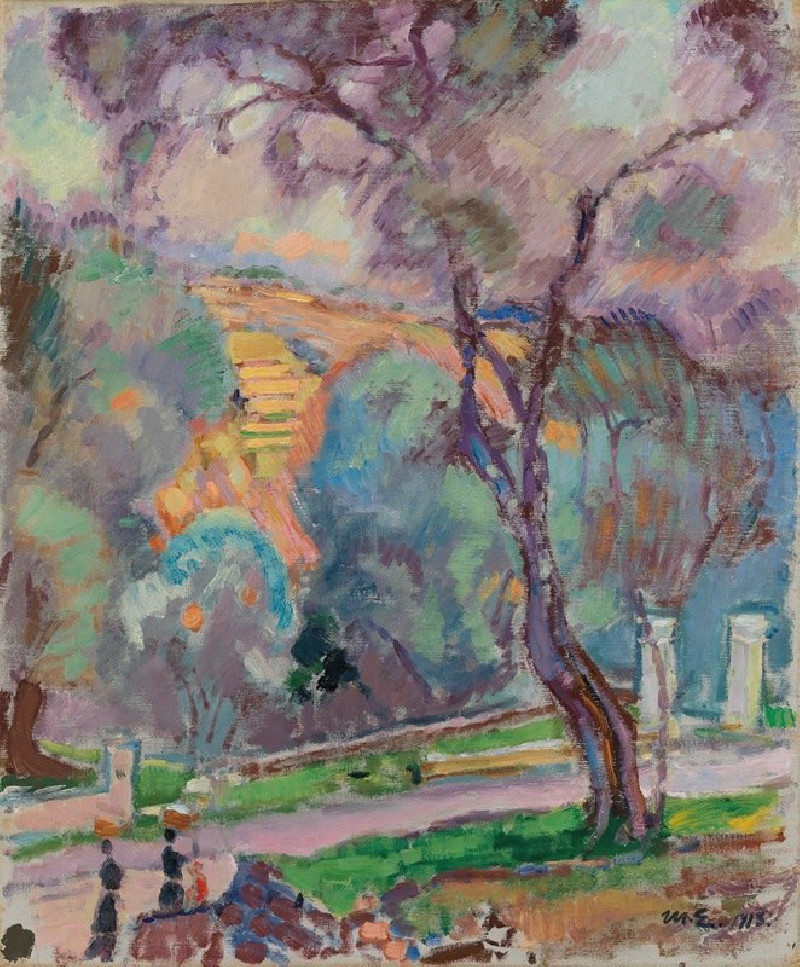Self-Portrait (1911)
Technique: Giclée quality print
Recommended by our customers
More about this artwork
Alexej von Jawlensky's "Self-Portrait" from 1911 stands as a compelling exploration of the artist's internal and external persona through the expressionistic use of color and form. In this painting, Jawlensky depicts himself with a piercing, direct gaze that challenges the viewer, his face constructed from bold, emotive strokes of green, yellow, and red, suggestive of the intensity and complexity of his emotions.Noteworthy is the use of stark, contrasting colors—a hallmark of Expressionism—which not only highlights the contours and angles of his face but also serves to convey the psychological underpinnings and spiritual turmoil Jawlensky might have been experiencing at the time. The rich red of the garment and the cool, diffuse blue of the background further accentuate the warmth and intensity of his visage, making the portrait a vivid composition of the artist's identity.Jawlensky's technique, characterized by thick, dynamic brushstrokes, imbues the work with a raw, energetic quality that makes the portrait resonate with a profound authenticity and emotional depth.
Delivery
Returns
Alexej Georgewitsch von Jawlensky (13 March 1864 – 15 March 1941) was a Russian expressionist painter active in Germany. He was a key member of the New Munich Artist's Association (Neue Künstlervereinigung München), Der Blaue Reiter (The Blue Rider) group and later the Die Blaue Vier (The Blue Four).

